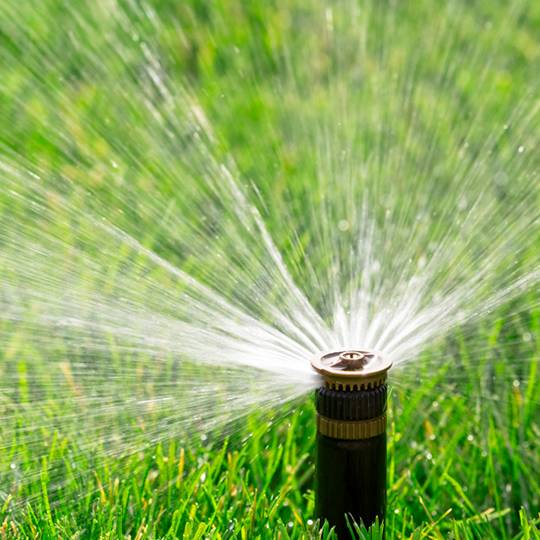How Much to Water the Lawn
Posted
August 4, 2016

How much should you water? How often? Proper watering is crucial to having the nicest lawn on the block. Here’s our proven, easy-to-follow strategy on how much to water the lawn to keep it healthy.
Give your lawn a consistent amount of water, all year round
Your lawn needs about one inch of water (including rainfall) per week, every week, even during winter. If temperatures remain at or above 85 degrees for a while, the lawn may need 1 ½ to 2 inches of water. If you want to let the grass go dormant and fade in color, that’s fine. Grass can survive up to a month of drought conditions. But be consistent, whatever you decide. Inconsistent watering will stress the lawn more than not watering at all.
Figure out how much water your lawn gets during a watering session with the “tuna can method.” Place a few empty tuna cans at varied distances from your sprinkler. (Tuna cans or 5.5-ounce pet food cans are ideal because they’re an inch tall and have a flat bottom.) Run your sprinkler and see how long it takes to fill the cans. Stop watering when they’re full, or split the session into two and stop when they’re half full. You also can get a timer to turn off your sprinklers automatically. It’ll cost about $10 at a local garden store, but it will save you lots more in water conservation.
Don’t water so much that it’s running down the sidewalk or street
It won’t help the pavement grow. If it takes 30 minutes to fill a tuna can (see “tuna can” tip described above) but you have runoff by 15 minutes, try shorter intervals. Water for 15 minutes, let that soak in, wait, then water another 15 minutes. This method might be useful if you haven’t watered in a while or you have compact, heavy, clay-rich soil.
Lose the daily ritual
Short, daily watering sessions will only promote fungal disease and shallow root systems. It’s always better to water deeply, less often.
Water the lawn more when it’s hot
Extreme heat means high evaporation rates and greater stress on the grass. If you’ve been watering consistently, increase the weekly amount to 1 ½ inches, depending on the variety of grass. If your lawn shows signs of stress in response to drought and you don’t want it to turn dormant, keep the sprinkler on a bit longer.
Is your lawn drought stressed? Step on it. If the grass blades don’t spring back, you might need to increase watering times.
If a brown patch of grass doesn’t respond to watering, water isn’t the problem
You may be dealing with a fungal disease, too much fertilizer, or other issues.
If you’re unsure about watering, try an irrigation system
Using an irrigation system is a great way to ensure your lawn gets the proper amount of water. Depending on how long you plan to stay put, an automated system will ultimately pay for itself in water conservation. Ask Cardinal Lawn about how to install one.
If you have a question…call us!
Your friendly neighborhood lawn-care professionals at Cardinal Lawn are here to help you determine the right amount of water for your lawn. Contact us today at 614-808-4446 for a free consultation.
Special Offer for New Customers
Two Free Lawn Care Treatments
Hurry! Offer Expires April 30, 2024

Download Your FREE Summer Recovery Guide
The extreme conditions of summer can take a toll on your lawn’s health. Take some time to learn how to keep it healthy–especially once a drought hits. This guide teaches you what needs to be done to maintain your lawn’s health during a hot, dry summer.